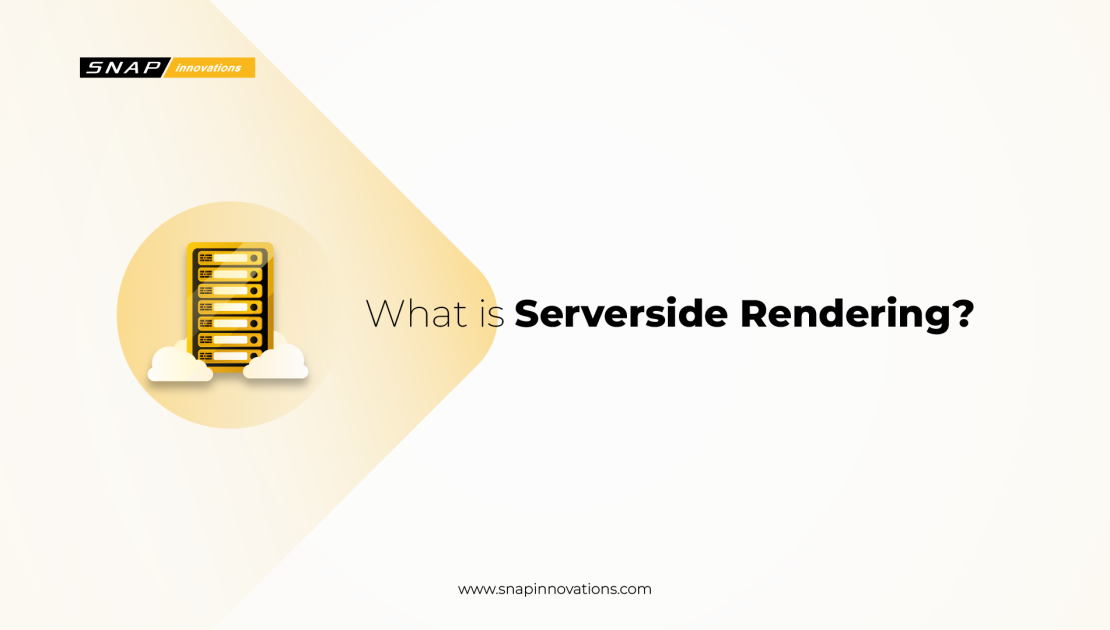In the ever-evolving ecosystem of web development, various technologies and techniques continually emerge, empowering developers to create more efficient, responsive, and user-friendly websites. One remarkable technology that has caught the eye of the developer community is serverside rendering (SSR). As an essential concept in modern web development, serverside rendering significantly improves web application performance and enhances the user’s experience by ensuring that content loads quickly and seamlessly. This article will delve deeply into serverside rendering, unraveling its essence, benefits, ideal use cases, and challenges, providing a comprehensive understanding of SSR in the current technological landscape.
The world of web development is incredibly dynamic, with continuous innovations aimed at improving both the developer’s workflow and the user’s browsing experience. Serverside rendering stands as a pillar in this innovative flow, facilitating the construction of more optimized and performant web pages. It is an indispensable asset for developers who aim to balance between the imperative needs of SEO optimization and delivering high-quality user experiences.
In the subsequent sections, we will unearth what serverside rendering entails, explore its profound advantages, discern when it’s most effective to implement SSR, and discuss the hurdles one might encounter in the serverside rendering journey. By the end of this exploration, you will possess an enriched perspective on serverside rendering, enabling you to make more informed decisions in your web development projects.
What is Serverside Rendering?
 Serverside rendering is a technique used in web development where the server processes and renders the webpage on the server itself before sending it to the client’s browser. This implies that the browser receives a fully rendered page, ready to be displayed, ensuring that users can interact with the content more promptly. This is in contrast to client-side rendering, where the webpage is rendered directly in the browser, which can often delay content visibility and user interactivity as the browser processes the necessary JavaScript.
Serverside rendering is a technique used in web development where the server processes and renders the webpage on the server itself before sending it to the client’s browser. This implies that the browser receives a fully rendered page, ready to be displayed, ensuring that users can interact with the content more promptly. This is in contrast to client-side rendering, where the webpage is rendered directly in the browser, which can often delay content visibility and user interactivity as the browser processes the necessary JavaScript.
The implementation of serverside rendering contributes immensely to improving a website’s performance. Pages rendered on the server load faster, providing a smoother user experience. The rapid loading times are not just a boon for user satisfaction but are also a crucial factor in enhancing the website’s visibility in search engine results, an aspect that is vitally important in the digital age where online visibility can significantly influence success.
SSR is not a newly minted concept but has regained prominence with the advent of JavaScript frameworks and libraries such as React, Vue, and Angular. These technologies have rejuvenated serverside rendering, enabling the creation of more dynamic, efficient, and user-focused web applications.
Also Read: What is OMS and How does it work?
Advantages of Serverside Rendering
 Serverside rendering comes with a wealth of benefits that enhance the overall functionality and performance of web applications. First and foremost, SSR contributes to faster page loads. Since the content is already rendered on the server, users don’t have to wait for JavaScript to run on their browsers to see the webpage’s content. This expedited content delivery plays a pivotal role in improving user experience, ensuring that users remain engaged and less likely to abandon the site due to slow loading times.
Serverside rendering comes with a wealth of benefits that enhance the overall functionality and performance of web applications. First and foremost, SSR contributes to faster page loads. Since the content is already rendered on the server, users don’t have to wait for JavaScript to run on their browsers to see the webpage’s content. This expedited content delivery plays a pivotal role in improving user experience, ensuring that users remain engaged and less likely to abandon the site due to slow loading times.
SSR also holds significant merits in the realm of search engine optimization (SEO). Search engines favor websites that load quickly and provide valuable content promptly. Since serverside rendering accelerates page loading times, it can enhance a website’s SEO, making it more visible in search engine results and driving more organic traffic to the site.
In the context of initial page loads, serverside rendering stands out as it enables the browser to display a fully populated page on the first request. This is particularly advantageous for users with slower internet connections, as they can access and interact with the webpage content without undue delays. Furthermore, since the server pre-renders the page, it reduces the workload on the client’s device, ensuring that web applications run more smoothly and efficiently on devices with limited processing power.
Utilizing SSR also allows for improved performance on mobile devices. In an era where mobile browsing has become exceedingly prevalent, ensuring that web applications are optimized for mobile use is paramount. Serverside rendering facilitates this, ensuring that mobile users enjoy quicker page loads and an overall enhanced browsing experience.
When Should You Opt for SSR?
 Implementing serverside rendering is not a one-size-fits-all solution, and it’s essential to discern when it is most beneficial to utilize SSR in your projects.
Implementing serverside rendering is not a one-size-fits-all solution, and it’s essential to discern when it is most beneficial to utilize SSR in your projects.
1. SEO-Critical Applications
For public-facing websites where search engine optimization (SEO) holds paramount significance, serverside rendering is an excellent option. Websites such as blogs, e-commerce platforms, and corporate sites that heavily rely on online visibility to attract users and customers greatly benefit from SSR.
Enhanced Visibility: Serverside rendering facilitates faster page loads and more efficient content delivery, traits that search engines typically favor, potentially boosting the site’s rankings in search results.
Prompt Content Delivery: Since SSR enables immediate content visibility, it improves the user experience, especially for first-time visitors, making them more likely to engage with the content and reducing bounce rates.
2. Progressive Web Apps and Mobile Web Applications
SSR is incredibly beneficial when building progressive web apps (PWAs) and mobile web applications. Its ability to improve performance and load times on mobile devices makes it a preferred choice for mobile-centric applications.
Optimized Performance: Mobile users often deal with varying network conditions. SSR ensures that these users receive content promptly, resulting in a better user experience.
Improved Usability: Due to faster content loading, users can interact with the application more seamlessly, which is essential for applications aiming to deliver excellent mobile user experiences.
3. Limited Applicability Scenarios
However, serverside rendering might not be the universal solution for every scenario. In cases where SEO is not a focal point or where the application is not customer-facing, such as internal tools and dashboards, the necessity of SSR diminishes.
Non-SEO Dependent Applications: For applications like internal tools or dashboards, where SEO is not a priority, the benefits of SSR might not be as impactful. In such cases, the decision to use SSR can be based on other considerations, such as overall performance and development complexity.
Specific Use Cases: It’s also crucial to consider the specific needs and priorities of each project. If the performance improvements of SSR align with the project’s goals, it can be a valuable addition, but it may not be necessary in scenarios where initial load times and performance are not critical priorities.
The Challenges of Serverside Rendering
Despite its numerous advantages, serverside rendering also presents some challenges.
1. Complex Development Process
Serverside rendering introduces a layer of complexity into the web development process that can be quite challenging to navigate. To effectively implement SSR, developers need a thorough understanding of both client-side and server-side operations. This means mastering different technologies, architectures, and programming paradigms to create a seamless and efficient user experience.
Detailed Knowledge Requirement: Developers must be well-versed with various technologies, and they must understand how to optimize each part of the application, from the server to the client, to work harmoniously with SSR.
Continuous Learning: Given the dynamic nature of web development technologies and best practices, developers must engage in continuous learning to keep up with the latest trends and techniques in serverside rendering.
2. Server Load
Serverside rendering can potentially increase the load on the server. Since the server is tasked with rendering the pages and then sending the fully compiled content to the client, it can be resource-intensive, especially during peak traffic times.
Optimization Challenges: Developers need to optimize the server to handle the increased load effectively. This may involve fine-tuning the server configurations and employing load balancing strategies.
Scalability: Ensuring that the application remains scalable and maintains high performance under varying loads is crucial. Developers may need to employ various strategies and tools to maintain scalability and performance.
3. State Management and Synchronization
Managing and synchronizing the state between the server and client can be quite challenging. It involves ensuring that data remains consistent across user sessions and navigations, providing a seamless user experience.
Consistency: Developers must ensure that the application’s state remains consistent across different parts of the application, requiring careful planning and coding.
Synchronization: Keeping the client and server synchronized to ensure that users always access up-to-date and accurate data is crucial. It involves developing mechanisms to efficiently synchronize data between the client and server.
4. Caching Strategies
Efficient caching strategies are vital to maximize the benefits of serverside rendering. Caching involves storing copies of files or data results in strategic locations to improve access times and reduce server load.
Strategy Development: Developing an efficient caching strategy requires a deep understanding of the application’s data flow and access patterns. It involves determining what data should be cached, where it should be cached, and how often it should be updated.
Implementation Complexity: Implementing caching strategies can be quite complex and requires careful planning and testing to ensure that it works as intended, improving performance without causing inconsistencies or errors.
The Flexibility and Adaptability of SSR
Serverside rendering is exceptionally adaptable, offering flexibility in how web pages are delivered and presented. With SSR, developers can optimize the loading performance for various contents, whether it’s text, images, or dynamic data, ensuring that each element is delivered with optimal efficiency and speed.
The adaptability of SSR extends to its compatibility with various frameworks and libraries such as React, Vue, and Angular. This means that developers can leverage the benefits of SSR across different technologies, allowing for a more versatile and robust web development approach.
SSR’s flexibility also allows for a more tailored user experience. By rendering pages on the server, developers can customize content delivery based on various factors such as the user’s device, location, and preferences, enabling a more personalized and engaging user experience.
Moreover, SSR facilitates improved error handling and debugging. Since the server pre-renders pages, errors can be identified and addressed more efficiently, contributing to a more stable and reliable web application.
SSR and its Relationship with JavaScript Frameworks
Serverside rendering shares a profound relationship with modern JavaScript frameworks like React, Vue, and Angular. These frameworks have adopted and integrated SSR into their ecosystems, enhancing their capabilities and performance.
For instance, with React, SSR can be implemented using frameworks like Next.js, allowing developers to build applications that are pre-rendered on the server, enhancing their performance and SEO. Similar integrations exist for Vue and Angular, each providing tools and frameworks that facilitate serverside rendering, like Nuxt.js for Vue.
This integration between SSR and JavaScript frameworks signifies the synergy of technologies that together bolster the effectiveness, efficiency, and robustness of web applications. It allows developers to create applications that are not only dynamic and interactive but also highly performant and SEO-optimized.
Future Prospects of Serverside Rendering
Moreover, cloud technologies are also expected to significantly influence the trajectory of serverside rendering (SSR) in the future. As cloud services continue to grow in prominence and sophistication, SSR can leverage these advancements to improve scalability, reliability, and performance of web applications. This means that web applications can efficiently handle increased load, ensure uptime, and provide seamless user experiences, adapting dynamically to user demands and expectations.
In addition to this, artificial intelligence (AI) and machine learning (ML) integrations are likely to bring about transformative changes in SSR. These technologies could enable SSR to be more intelligent, allowing for enhanced personalization and dynamic content rendering based on user behavior and preferences. This will contribute to the creation of more engaging and user-friendly web applications, which are capable of delivering customized content and experiences in real-time.
Security is another domain where substantial advancements are anticipated. As cyber threats continue to evolve, the implementation of robust security measures within SSR will be paramount. This foresight would mean that SSR technologies will become more secure and resilient against a variety of threats, ensuring the protection of sensitive user data and the integrity of web applications.
Furthermore, the convergence of serverside rendering with edge computing is another promising prospect. By processing and rendering web applications closer to the user, edge computing can enhance the speed and performance of SSR, reducing latency and improving user experiences. This collaborative integration signifies a future where web applications are not only powerful and responsive but also extraordinarily fast and efficient.
Read More: Innovation and Invention: Understanding Their Meanings, Differences, and Why They Matter
Conclusion
Serverside rendering stands as a monumental asset in the realm of web development, bringing forth a multitude of benefits such as improved performance, enhanced SEO, and a more refined user experience. Its ability to deliver pre-rendered pages to the browser ensures that users receive content swiftly and efficiently, fostering engagement and satisfaction.
Navigating the terrain of serverside rendering may present challenges, from managing server loads to handling state synchronization. However, the profound benefits and potential of SSR, coupled with the continuous advancements and integrations in the technology landscape, make it an invaluable tool in a developer’s arsenal. Its role in shaping the future of web development is unmistakably significant, promising a landscape of more optimized, performant, and user-focused web applications.

